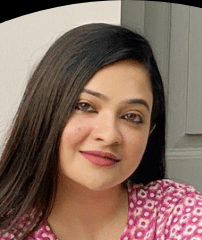Analog Filter related selected MCQ Questions has been discussed in this article particularly for Core Technical Round Electronics domain interview. This is useful for different competitive and Semester Exam.
Q. The input-terminals of an op-amp are termed as
- High & low terminals
- Differential & non-differential terminals
- Inverting and non-inverting terminals
- Positive & negative terminals
Ans-(3)
Q. In a series resonance circuit, to obtain a LPF character, across which, output voltage should be measured?
- Inductive element
- Resistive element
- Capacitive element
- All of these
Ans-(3)
To learn about low pass filter and it’s characteristics click here
Q. In a series resonance circuit, to get a high-pass filter character, across which, output voltage should be measured?
- Resistive element
- Inductive element
- Capacitive element
- All of these
Ans-(2)
Q. A high pass filter is mainly
- A differentiator circuit with low time constant.
- A differentiator circuit with 0.75 time constant.
- An integrator circuit with small time constant.
- An integrator circuit with 0.50 time constant.
Ans-(1)
Q. The transfer function of an low-pass RC network is
- RCs/1+RCs
- 1/1+RCs
- RC/1+RCs
- s/1+RCs
Ans-(2)
Q. For a high-pass-RC circuit, when exposed to a unit step function, across capacitor voltage will be
- e-t/RC
- et/RC
- 1
- 1-e-t/RC
Ans-(4)
To learn about high pass filter and their advantages, disadvantage and characteristics click here
Q. In low-pass filter, at which frequency the highest point of the graph occurs?
- At f resonant
- Below f resonant
- Above f resonant
- At any frequency
Ans-(2)
Q. The transfer function V2(s)/V1(s)=10s/x2+10s+100 is for an active
- Low-pass filter
- Band-pass filter
- High-pass filter
- All-pass filter
Ans-(3)
Q. The transfer function T(s)=s2/s2+as+b belongs to an active
- LPF
- HPF
- BPF
- BSF
Ans-(2)
Q. The transfer function V2(s)/V1(s)=s2+∂/s2+as+∂. The circuit is a
- LPF
- HPF
- BPF
- BSF
Ans-(3)
Q. In an RL low-pass filter circuit, the VOUT is measured across the inductor and it’s lags from the input
- True
- False
Ans-(2)
Q. A band pass filter allows only the frequency which is in the range between the upper and lower frequency.
- True
- False
Ans-(2)
To learn about band pass filter and their advantages, disadvantage and characteristics click here
Q. The roll rate of a Resistor-Capacitor and Resistor-Inductor analog filter is 20 dB/decade.
- True
- False
Ans- (1)
Q. Active filters are usually fabricated by
- L circuits
- RL circuits
- RLC circuits
- Op-amp circuits
Ans-(4)
Q. What are the most used active filters?
- Low-pass filters & high-pass filters
- Band-pass filters and band-reject filters
- All-pass filters
- Correct option is not present
Ans-(1)
Q. Ideal response of a analog filter occurs in
- Pass-band and stop-band freq.
- Stop-band freq. only
- Pass-band freq.
- None of the above
Ans-(3)
Q. Inductors are not preferred for audio frequency because of
- Large size and bulky as per weight
- Low input impedance
- High power intemperance
- None of the above
Ans-(1)
Q. analog filters are classified as
- Active & passive filter
- Analog & digital filter
- Audio & radio frequency
- All of the above
Ans-(4)
To learn about filter classification and their advantages, disadvantage and characteristics click here
Q. Which analog filter has two stop bands?
- Band-pass filter
- Low-pass filter
- All-pass filter
- Butterworth filter
Ans-(1)
Q. Which analog filter is called flat-flat filter?
- Chebyshev filter
- All pass filter
- Butterworth filter
- None of the above
Ans-(3)
Q. The gain of the 1st order low-pass filter decay rate is
- 30dB/decade
- 50dB/decade
- 40dB/decade
- 20dB/decade
Ans-(4)
Q. Which one demonstrate a linear phase analog filter characteristic?
- Bessel
- Chebyshev
- Butterworth
- All of the above
Ans-(1)
Q. All pass is also known as
- Phase shift filter
- Time delay filter
- Delay equalizer
- All of the above
Ans-(4)
Q. An op-amp has
- An infinite voltage gain
- Unity voltage gain
- Zero voltage gain
- None of the above
Ans-(1)

Hi, I am Soumali Bhattacharya. I have done Master’s in Electronics.
I am currently invested in the field of Electronics and communication.
My articles are focused on the major areas of core electronics in a very simple yet informative approach.
I am a vivid learner and try to keep myself updated with all the latest technologies in the field of Electronics domains.
Let’s connect through LinkedIn –